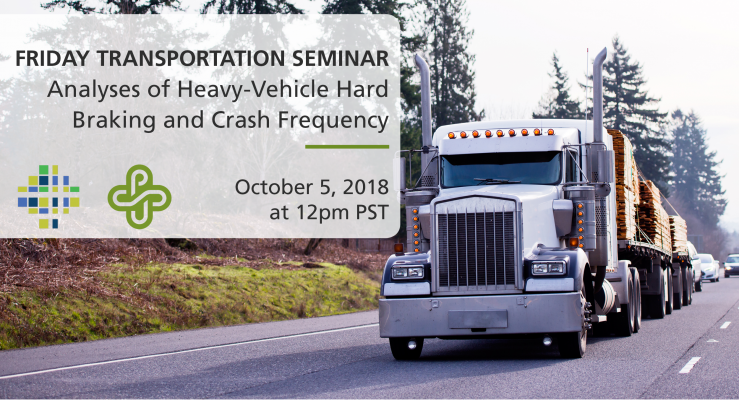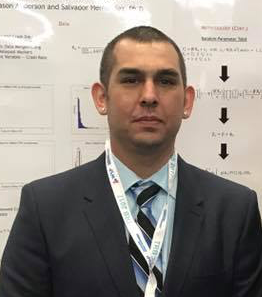
Friday Transportation Seminars at Portland State University have been a tradition since 2000. With over 450 seminars presented and recorded (access the archive of seminars here), we host both visiting and local scholars to share the latest in research, technology, and implementation in transportation.
WATCH THE RECORDED VIDEO
PRESENTATION SLIDES
Miss this seminar or want a look back? You can view the presentation slides here.
EVENT OVERVIEW
In heavy-vehicles (a truck with a gross vehicle weight rating of greater than 10,000 pounds), a hard braking event is described as an event that prompts the vehicle’s “black box” to record an abrupt change in speed. More specifically, this occurs when the driver applies excess force to the vehicle’s brake. These hard braking events can then serve as a proxy for several factors, such as economic impacts, environmental impacts, and impacts on safety. In the context of the present study, being that approximately one-third of all heavy-vehicle-caused crashes in 2014 were attributed to faulty brakes, there is a need to better understand heavy-vehicle hard braking and its impact on safety for all highway users. Therefore, the current study utilizes a previously unused freight data source to identify statistically significant heavy-vehicle hard braking hot spots.
Upon merging several datasets, crash data is spatially joined to the hard braking hot spots to conduct a crash frequency analysis of the four crash types that occurred most often: rear-end crashes, turning movement crashes, fixed-object crashes, and sideswipe (overtaking) crashes. Applying advanced statistical and econometric methods, a set of random parameters models and a set of spatial lag models were fit to determine if accounting for unobserved heterogeneity or spatial correlation provides better parameter estimates, overall model fit, and higher prediction rate of crash frequencies for crashes at heavy-vehicle hard braking hot spots. Results show that several exposure-based variables impact the expected number of crashes, such as traffic volume, roadway characteristics, posted limits, etc. In terms of the preferred modeling framework, the spatial lag models provided a slightly better overall fit and correctly predicted more crash counts for the given datasets. This suggests that transportation agencies and safety practitioners should explore the impact of spatial correlation (as well as unobserved heterogeneity) when conducting safety analyses and generating specific safety performance functions.
KEY LEARNING OUTCOMES
- Hard braking can serve as a proxy for several factors, one of which is safety.
- Address the data limitation of unobserved heterogeneity.
- Address the data limitation of spatial correlation.
- Identified factors and methodologies can be used by ODOT to develop specific mitigation strategies and better predict crash frequency, respectively.
SPEAKER
 Jason Anderson, Oregon State University
Jason Anderson, Oregon State University
Jason C. Anderson is a recent Ph.D. graduate from Oregon State University. Jason's research focuses on the application of advanced statistical and econometric methods to answer unique research questions and develop solutions to engineering problems. In recent studies, the primary focus of these methods has been on transportation safety and user perceptions. In his spare time, Jason is an avid sports fan - he doesn't miss a Kings game or a NASCAR race.
PROFESSIONAL DEVELOPMENT
This 60-minute seminar is eligible for 1 hour of professional development credit for AICP (see our provider summary). We provide an electronic attendance certificate for other types of certification maintenance.
LEARN MORE
Sign up for our newsletter to receive monthly updates.
